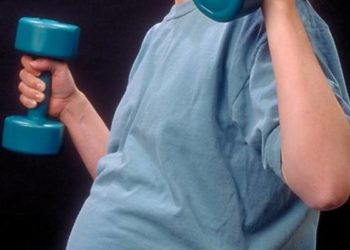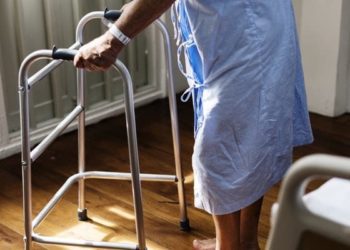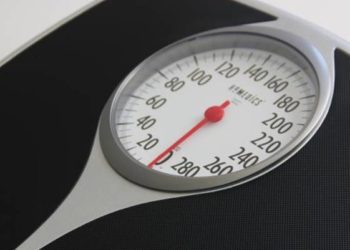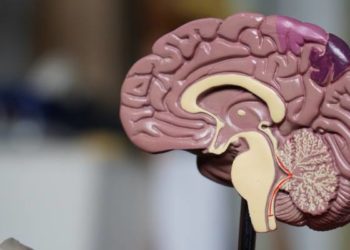Wellness Check: Exercise
Socioeconomic status may influence the association between physical activity and health outcomes
1. In this prospective study, lower socioeconomic status (SES) led to a stronger inverse association between moderate-to-vigorous physical activity (MVPA) and outcomes such as all-cause mortality (ACM) and cardiovascular disease (CVD).
2. However, the effect of SES on the association between low MVPA and health outcomes was more prominent based on area-level SES, rather than individual-level SES.
Evidence Rating Level: 2 (Good)
Socioeconomic (SES) status plays an important role in health behaviors, and it is well known that those of low SES experience poorer health outcomes. However, the role that SES plays on physical activity, and outcomes related to physical activity and sedentary behavior, is not well established. As a result, the objective of the present study was to evaluate the influence of SES on the relationship between low moderate-to-vigorous physical activity (MVPA) and both all-cause mortality (ACM) and incident cardiovascular disease (CVD).
In this prospective study, 328,228 participants aged 40 to 69 years from the UK Biobank were included from 2006-2010. Participants were excluded if they had missing SES information, poor self-rated health, prevalent CVD, or an event (death or CVD event) within 2 years of recruitment. Self-reported questionnaires and accelerometer-measured data were used. An individual-level composite SES index was used to determine SES, while the Townsend Index was used to determine area-level SES. Data analysis was performed using multivariable-adjusted Cox proportional hazards regression. The primary outcomes were ACM and incident CVD.
The results demonstrated that a lower SES led to a stronger inverse association between MVPA and both ACM and CVD. Additionally, the negative effects of high screen time and low MVPA on ACM and CVD were more prominent in areas of lower SES. However, the effect of SES on the association between MVPA and health outcomes was more prominent based on area-level SES, rather than individual-level SES. The study was limited by the use of self-reporting, which may have introduced recall bias. Nonetheless, the present study described the impact that SES has on the relationship between MVPA and ACM and incident CVD.
Exercise improves symptoms in adults with depression
1. In this systematic review and meta-analysis, exercise had a significantly positive effect on depressive symptoms.
2. In addition, exercise was found to be non-inferior to current first-line treatments for depression.
Evidence Rating Level: 1 (Excellent)
Exercise is well-known to be an effective adjunctive treatment for depression. Recently, several studies have investigated the relationship between exercise and depressive symptoms. As a result, the objective of the present systematic review and meta-analysis was to review the current evidence on the effects of exercise in reducing depressive symptoms in adults with clinical depression.
Of 15,734 identified records, 41 (n=2544) studies were included from various databases from database inception to September 2022. Studies were included if they investigated the role of exercise in treating depressive symptoms, used a validated depression scale, and included a non-exercise control group. Additionally, study participants had to be aged 18 years or older and have a diagnosis of major depressive disorder or dysthymia, or have depressive symptoms determined by validated screening measures. Studies were excluded if they used mind-body activities such as yoga or tai chi. The review was performed using PRISMA guidelines. Risk of bias was assessed using the revised Cochrane risk-of-bias tool for randomized trials. Statistical analyses were completed using random effects meta-analysis. The primary outcome was the mean change in depressive symptoms from baseline in the exercise group compared to the control group.
The results demonstrated that exercise had moderate to large effects on depressive symptoms compared to the control group. Furthermore, the role of exercise on depressive symptoms was significant in sub-group analyses, regardless of exercise type and depression classification. In addition, non-inferiority trials have demonstrated that exercise is non-inferior to current first-line treatments for depression. Despite these results, the review was limited by the heterogeneity of the included studies. Nonetheless, the present study synthesized the current literature and demonstrated the role of exercise in improving depressive symptoms.
Exercise and caloric restriction reduce visceral fat in overweight adults
1. In this systematic review and meta-analysis, both exercise and caloric restriction were associated with reductions in visceral fat in overweight individuals. The effect of exercise on visceral fat was dose-dependent, while the impact of caloric restriction was not.
2. However, both exercise and caloric restriction showed a dose-dependent effect in reducing waist circumference.
Evidence Rating Level: 1 (Excellent)
Exercise and caloric restriction are important lifestyle behaviors that aid in weight loss for overweight individuals. Currently, their effect in reducing visceral fat while controlling for the weekly energy deficit created by these interventions remains unknown. As a result, the objective of the present study was to compare the dose-response relationship between exercise and caloric restriction on visceral fat loss in overweight and obese adults.
Of 7816 identified records, 40 (n=2190) studies were included from various databases from database inception to January 2022. Studies were included if they compared exercise or caloric restriction with relevant controls in overweight or obese adults, as defined by the WHO cut-off scores for body mass index (BMI). Studies were excluded if they assessed visceral fat mass using methods other than computerized tomography (CT) or magnetic resonance imagining (MRI). The review was performed using PRISMA guidelines. Risk of bias was assessed using Cochrane’s Risk of Bias 2 tool. Statistical analyses were performed using meta-regression. The primary outcome was the change in visceral fat measured by CT or MRI.
The results demonstrated that, although both exercise and caloric restriction were associated with decreased visceral fat mass, only exercise demonstrated a dose-dependent effect. However, both interventions had a dose-dependent effect on waist circumference. The study was limited by the greater proportion of included studies evaluating exercise than caloric restriction, which may have undermined the effects of caloric restriction. Nonetheless, the present study supported the notion that increased exercise may decrease visceral fat and waist circumference in overweight and obese individuals.
Neuropsychological and biomechanical measures dominate assessment of limb pain in athletes
1. In this scoping review, neuropsychological and biomechanical assessments of limb pain in athletes were most frequently used, while affective, cognitive, and socioenvironmental pain assessment tools were underrepresented.
2. Furthermore, athletes with a physical or intellectual disability were underrepresented in the included studies.
Evidence Rating Level: 1 (Excellent)
Sports-related injuries are detrimental to athletes for various psychological and physical reasons, and pain rates for both upper and lower limb injuries in athletes remain elevated. Currently, the literature surrounding upper and lower limb pain in athletes is lacking. As a result, the objective of the present scoping review was to review the methods used to assess and classify upper and lower limb pain in athletes according to the domains of the International Olympic Committee (IOC) Athlete Pain Framework.
Of 3292 identified records, 470 (n=23770) studies were included from various databases from database inception to August 2021. Studies were included if they reported the assessment or classification of pain in athletes of any age engaged in a sport and training on a weekly basis. Studies were excluded if they included recreational exercisers, rather than athletes who engage in competition, if they only included pain originating in the spine or torso, or if there was an absence of pain measures. The review was performed using PRISMA guidelines and Joanna Briggs Institute standardized methodology for scoping reviews. The primary outcome was to determine the methods in which peripheral pain is assessed and classified in athletes.
The results demonstrated that there was a total of 167 different pain assessment tools identified to investigate upper and lower limb pain in athletes. The most well-represented domains of pain assessment were neurophysiological and biomechanical. In contrast, affective, cognitive, and socioenvironmental pain assessment tools were underrepresented in the literature. Furthermore, athletes with a physical disability or an intellectual disability were significantly underrepresented in the studies. The review was limited by the fact that some studies did not include pain-related objectives, which may have influenced the research findings. Nonetheless, the present study provided a foundation for future studies targeting the assessment of upper and lower limb pain in athletes.
Image: PD
©2023 2 Minute Medicine, Inc. All rights reserved. No works may be reproduced without expressed written consent from 2 Minute Medicine, Inc. Inquire about licensing here. No article should be construed as medical advice and is not intended as such by the authors or by 2 Minute Medicine, Inc.







